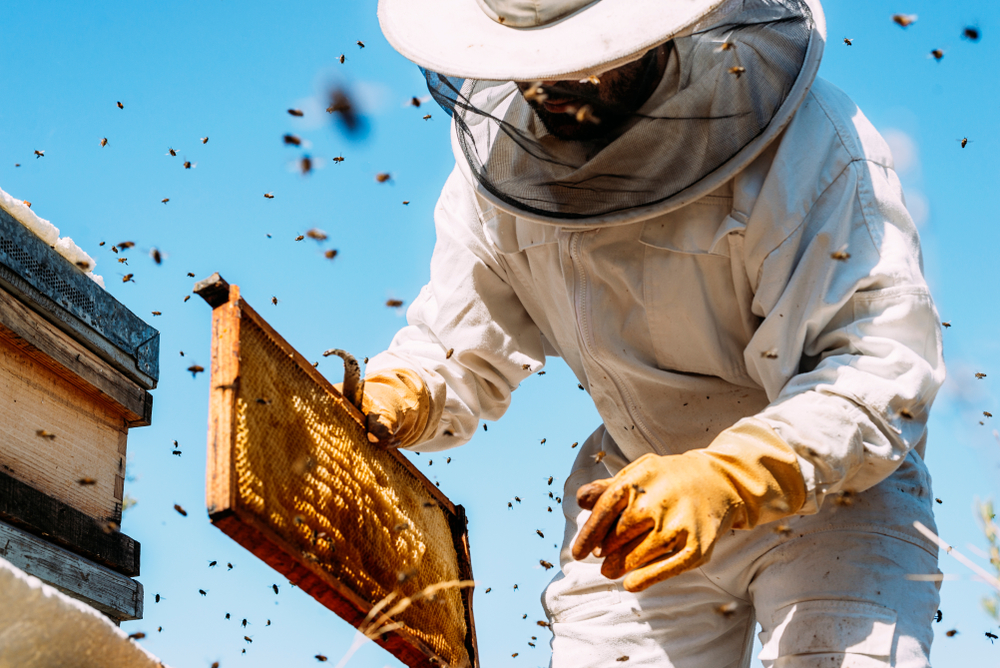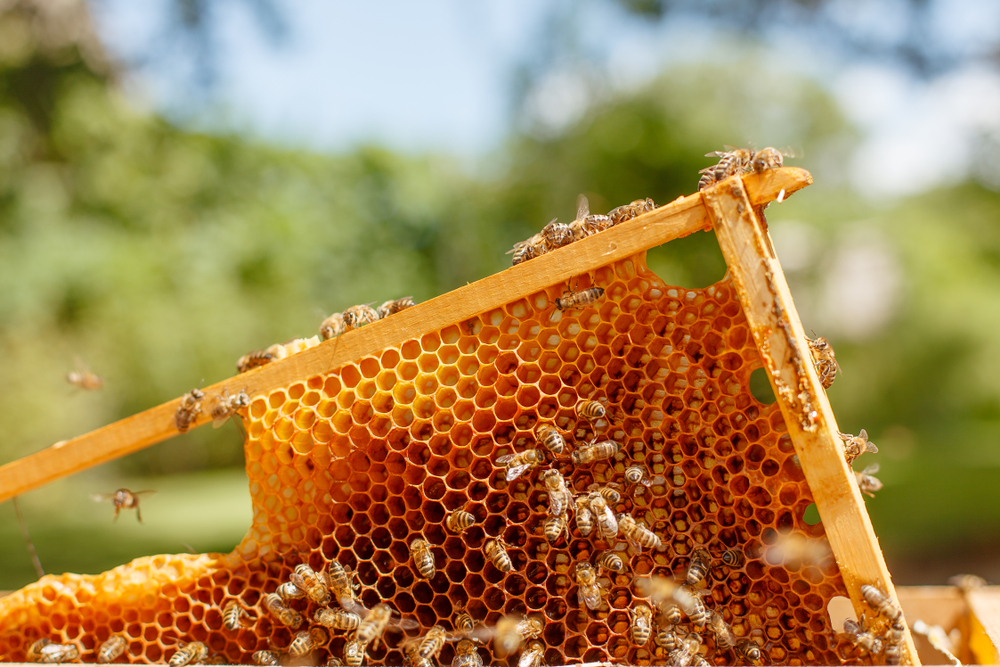THE BUZZING WORLD OF BEEKEEPING
More and more people are starting to dabble in a food- focused lifestyle of self-sufficiency — whether that’s growing their own veggies or raising chickens in a backyard coop, or for some, beekeeping.
While you can’t go wrong with gardening or managing a group of chicks, beekeeping makes for the perfect pastime to expand your hobby horizons and possibly overcome some fears. Plus, just think of all the delicious yard-to-table honey you’ll get.
From essential beekeeping supplies to the perfect apiary location, here’s what any aspiring beekeeper needs to know.
The Colony
If you ever had the unfortunate experience of discovering a beehive, you probably learned that bees love living together in a colony. While colonies can have upwards of 60,000 bees, there is only one queen bee, with the rest. being primarily female worker bees and some male drones.
The queen is larger and longer than the others and has a pointed abdomen. She is responsible for laying 1,500 eggs a day for two to five years in order to maintain a thriving colony. She also must stay strong and healthy or she’s at risk at being killed and replaced. A special pheromone lets the worker bees know whether she is alive and well or if she’s getting weaker.
Once they sense she’s getting weaker, they focus on feeding royal nectar to a small number of larvae until the first one hatches and becomes the new queen.
Gathering pollen, making wax, cleaning the hive and building honeycombs are just some of the other daily tasks worker bees are required to do. Tasks are “assigned” based on age with the younger bees doing duties within the hive and the older bees taking on the more dangerous jobs on the outside.
Drone bees make up a small percentage of a colony and only have one duty: to mate with the queen. Mating takes place mid-flight, and the successful male immediately falls to his death.
While you can’t go wrong with gardening or managing a group of chicks, beekeeping makes for the perfect pastime to expand your hobby horizons and possibly overcome some fears. Plus, just think of all the delicious yard-to-table honey you’ll get.
Beeswax is known as the miracle of the beehive. Without it, there’d be no beekeeping. Producing beeswax is quite an impressive process. Using special glands on their abdomens, worker bees secrete wax that is then formed into hexagon shapes which are used for all aspects of daily bee life, including storing honey. Another layer of wax goes over the combs with honey to lock in the moisture.
Mind Your Own Beeswax
A hot knife is used to scrape the wax caps off the frames of honey. The caps then need to be separated from the honey before the wax is filtered or cleaned.
Beekeeping Equipment
WOODENWARE: This creates the beehive itself, including the hive bottom, body and top cover. Durable, well-built woodenware gives the bees a safe place to live and thrive.
SMOKER: Smoke prevents bees from sensing pheromones that signify danger, which helps to keep them calm.
HIVE TOOL: A multipurpose tool used to open and inspect beehives.
PROTECTIVE GEAR: Hat/veil combinations with ventilated jackets or full-body bee suits provide a protective barrier against stings.
BEES: A beehive requires bees, of course! Make sure you order enough for one to two colonies to start.

Location of the Hive
After compiling all your beekeeping equipment, it’s time to decide where to put it all. While it’s important to be strategic with placement, remember that people today have thriving hives anywhere and everywhere. Still, there are a few things to keep in mind when placing hives.
Pick a spot where you will have easy access to the bees. If they are hard to get to, you might go there less frequently, and they won’t get the proper attention. The hive should get at least a half-day of sun. Additionally, if the sun hits the hive entry first thing in the morning, it will get the bees out and working.
Make sure there is a water source nearby. If there isn’t, you can always provide them with one. A pan filled with water and pebbles above the surface will suffice. Keep in mind: bees can’t swim, so the pebbles will help with the landing.
Try to avoid placing the hives near a neighbor’s yard. If you have a smaller outdoor space, you can mask the hive with hedges or bushes. That way your neighbors aren’t constantly reminded of your buzzing bees.
Hives and Colonies
A basic hive needs a few boxes for brood and a few boxes for honey. First-time hives require at least four boxes total to make it through the season. You can stack up the boxes to make the hive taller.
Once your hives are set up, you’re ready for the bees. You can order a bee package, which is a wooden frame with screen sides containing bees that aren’t related, or nucleus hives (nucs), which is a mini beehive with a laying queen and bees that are related. Packages are less expensive, easier to find and allow you to learn the whole process, but a lot more work is involved. Nucs on the other hand are well established and tend to be lessstressful on the bees.
Now That You're a Beekeeper...
Once your hive is up and running, your beekeeping responsibilities really begin. It’s your job to manage and care for these little buzzers. You’ll need to inspect the hive regularly to ensure the queen is alive and healthy. It’s also important to check whether the bees have enough space and resources to live.
Remember that bees need enough to get through the winter. As a beekeeper, you should only take what’s considered extra honey — after the bees have prepared enough to survive the colder months.

Other Ways to Support Bees
Plant More Wildflowers:
The easiest and prettiest way to help the bees is by creating pollinator habitats on your land. Even a small, square space filled with native wildflowers is enough to help a bee community. Talk to your local nursery about the best native flowers to plant.
Go Organic: Use organic products and natural solutions when treating your garden and yard. Insects like ladybugs and praying mantises can also help keep pests away.
Support Your Local Beekeepers:
Visit a nearby farmers’ market or check your grocery store or local honey and beeswax products. You may even be able to purchase straight from the farm. Remember, supporting local is always the way to go!